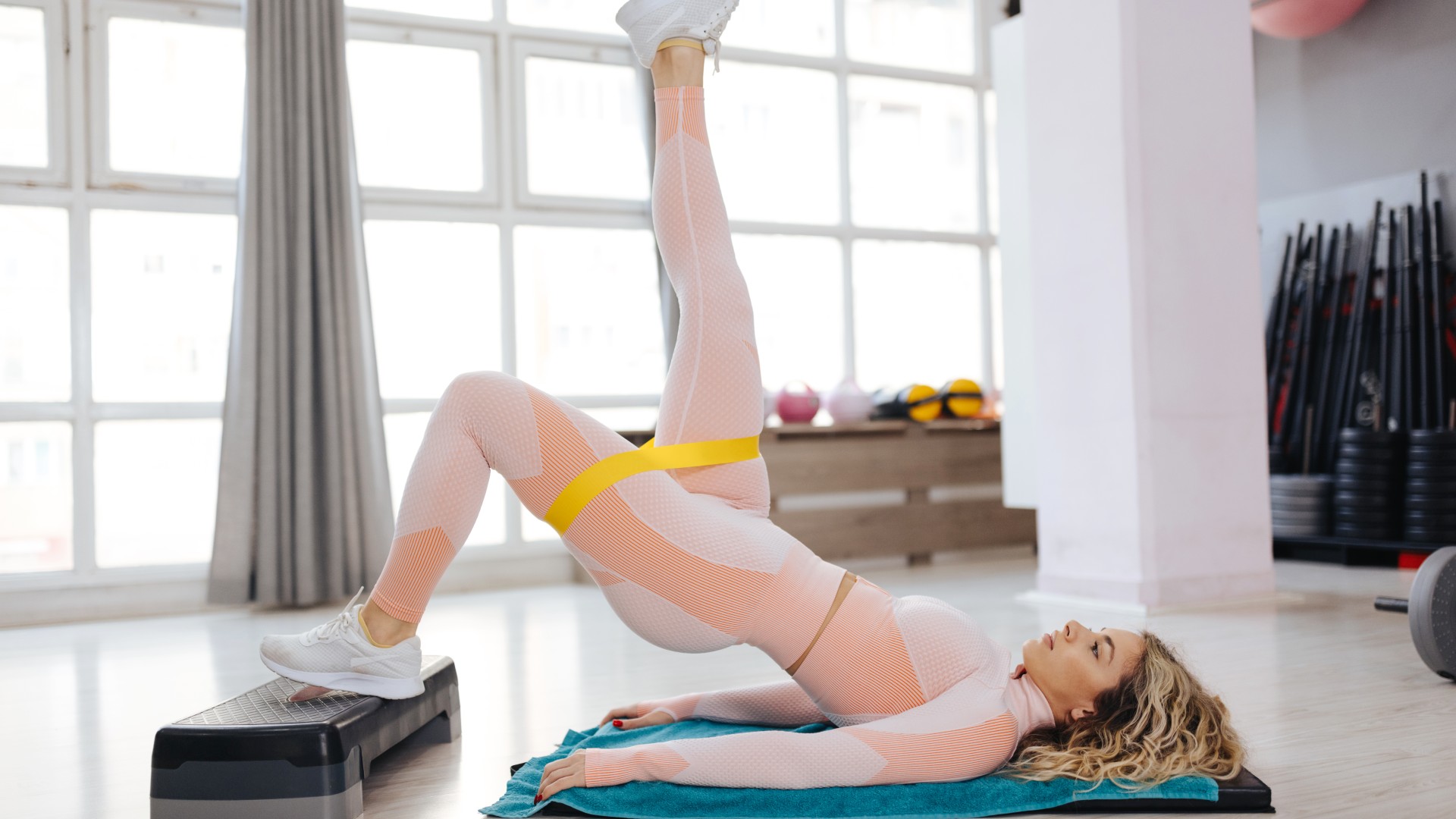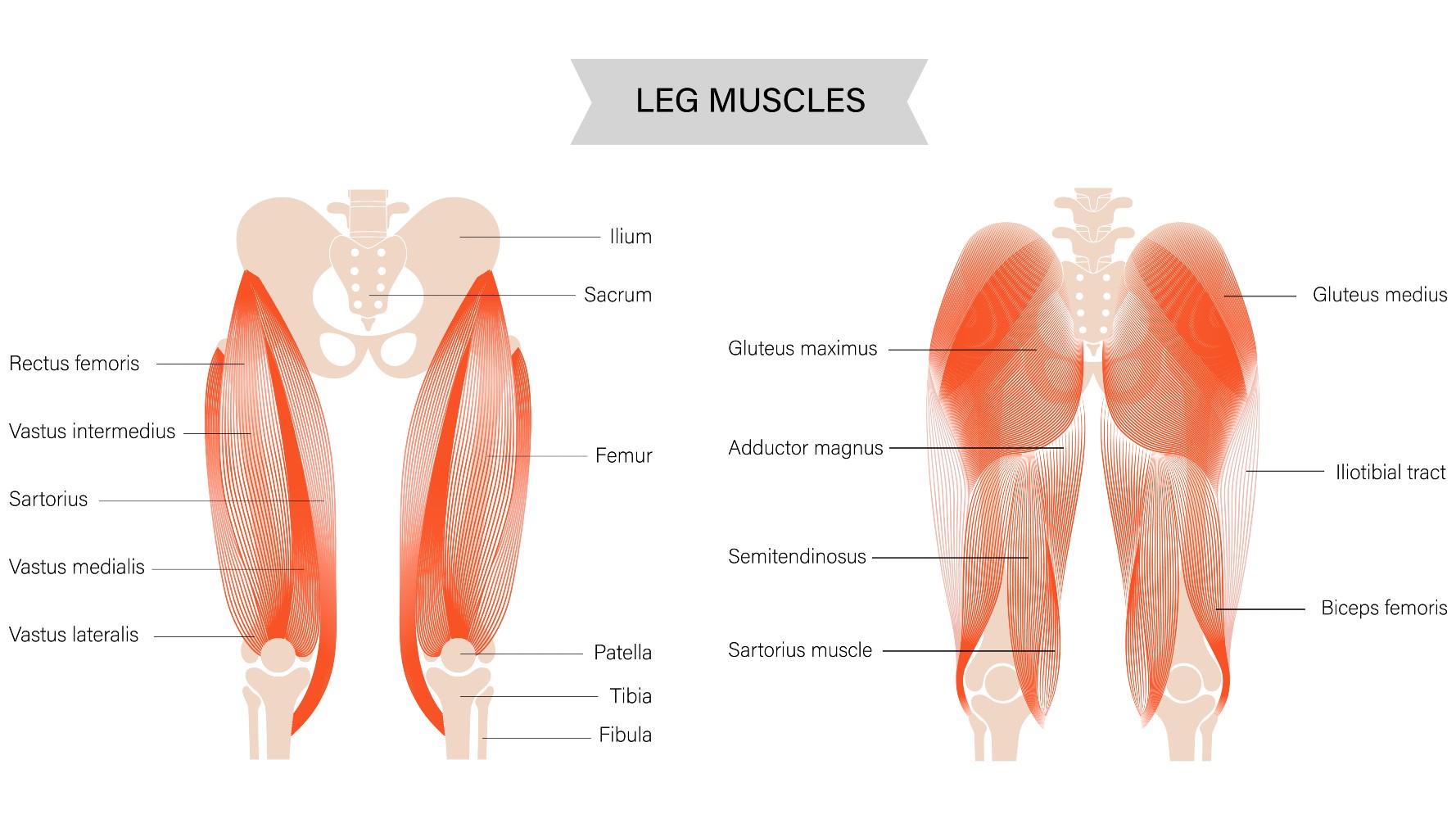
These five bodyweight exercises activate your glutes, build flexibility and boost lower body range of motion before leg day workouts.
You don’t need any equipment to do this routine, but I love adding an activation band from our round-up of the best resistance bands to increase the intensity of these moves and help strengthen my hips and glutes.
Below, I cover how to do each exercise, including a follow-along video for you to check your form, plus ways to scale the moves if you have tight muscles and limited range in your joints. Read on for the five glute exercises and their benefits for your lower body workouts.
What are the benefits of the 5 glute exercises?
A short mobility routine before leg day could increase your range of motion — how freely you can move around your joints — before a workout. Even 10 to 15 minutes helps exercisers find better depth during compound moves like squats, lunges and deadlifts and better quality movement patterns for each exercise.
Typically, coaches advise saving static exercises used during stretching for post-workout, providing an opportunity to wind down, stretch out tight muscles and increase flexibility.
But mobility drills, especially ones specific to the workout you’re about to do, help prepare the muscles and joints for the exercises you’ve programmed using preparatory gentle movement, lessening your risk of injury and providing oxygen and blood flow to the muscles.

Hips, knees and ankles are the prime focus joints. However, have you taken much time to think about your glute muscles? There’s a lot of buzz in the industry around glute workouts for building a buff butt or sculpting a summer peach, but your glutes are functional, whether you’re building or simply activating them.
Your glutes comprise three main muscle groups: gluteus maximus, gluteus medius and gluteus minimus. Although the gluteus maximus is large and powerful, some people — especially quad-dominant runners — struggle to activate the glutes properly before or during exercise, which could lead to back pain or injury if left undetected.
Funnily enough, it’s not just runners who struggle to activate them, and if you’re not using them, you’re losing them. But worry not. Regardless of how you work out, the simple bodyweight routine below can help fire up the glutes, including those deeper minimus stabilizer muscles, before you get stuck into running, weights, or both.
1. Glute sidekicks
Sidekicks use lateral movement to abduct the hip, recruiting the outer glutes — the gluteus medius. You can simply perform the exercise using your body weight or add an activation band just above your ankles or knees to make the exercise harder.
Lift your leg as high as possible to the side, pause at the top to create and hold tension in the relevant muscles, then slowly lower your leg so that your feet are hip-width distance apart, executing with control at all times. Keep your core engaged and spine tall, standing without arching your back or swinging your leg to generate movement.
Remember, the thicker the band, the harder the exercise will become. If you have weak outer glutes or tight hips, reduce the height of your leg and slowly increase your range over time.
- Perform 3-4 sets of 8-12 reps per leg
2. Glute kickbacks
Glute kickbacks, also known as donkey kicks, can be done using your body weight, but if you prefer, add a band just above the knees to increase tension in the glutes. Start on your hands and knees with a neutral spine, gently brace your stomach, keep your right leg bent at 90 degrees, then kick your right foot toward the ceiling.
Squeeze the right glute as your right knee reaches hip height, then slowly return to the starting position. In the top position, your foot should be flexed and flat (think about balancing a cup of coffee on it).
Avoid turning the hip outward and keep your torso parallel to the mat. You should feel a stretch through the hip flexors, plus a burn in the working glute muscles.
- Perform 3-4 sets of 8-12 reps per leg
3. Fire hydrants
Hydrants abduct the hips and work the outer glutes from a tabletop position. If you prefer, position a band just above your knees and start on your hands and knees. Adopt a neutral spine, flatten your back and gently brace your core.
Stack your hips directly over your knees and shoulders over your wrists and look toward the top of your mat. Keeping your right leg bent, slowly lift your leg to the right side, drawing the knee upward to hip height. Pause, squeeze your glute, then lower to the starting position.
Avoid swinging your leg or turning your hip outward, maintaining control over the lifting and lowering phases of the movement, known as concentric and eccentric contraction, respectively. Done correctly, you'll feel a gentle stretch in the groin area.
- Perform 3-4 sets of 8-12 reps per leg
4. Crab walks
As the name suggests, you’ll walk sideways during crab walks. The catch? Maintain a low squat position as you do, giving the quads, glutes and hamstrings plenty of time to kick up a burn.
First, wrap a band just above your knees or ankles, then sit into a low squat with your feet hip-width apart, spine neutral and stomach gently braced. Lift your chest and send your hips backward.
Step to the right with your right leg and plant your foot, then step with your left foot to meet your right, always maintaining a hip-width distance between both feet. Avoid turning your knees inward, consciously driving the knees in line with your big toes and keeping both feet facing forward.
Rounding the back is a common mistake, so try to maintain a straight spine and always move with control. If you want to turn up the heat even more, hold a weight with both hands.
- Perform 3-4 sets of 8-12 reps per leg
5. Banded clamshells
Clamshells allow you to isolate the hip and glute of the working leg, strengthening your hips and gluteus medius, which are vital for hip stability. The medius muscle sits outside the hip at the top of your bum, and is partially covered by the gluteus maximus; this fan-shaped muscle doesn’t get as much love as it should, so here’s one way to pump it up.
Bringing attention to the medius muscle could also help alleviate lower back pain, so I highly recommend this exercise if you can stomach the burn.
Lie on your right side, stacking your legs and bending your knees to 45 degrees. Rest on your right elbow and engage your core by tightening the stomach. Keeping the inner feet pressed together, slowly raise your upper leg as high as you can, driving the knee upward to open your hip without moving your lower leg.
Pause, then lower your leg back to the start position. I recommend adding a band just above the knees to bring this exercise to a boil.
- Perform 3-4 sets of 8-12 reps per leg







